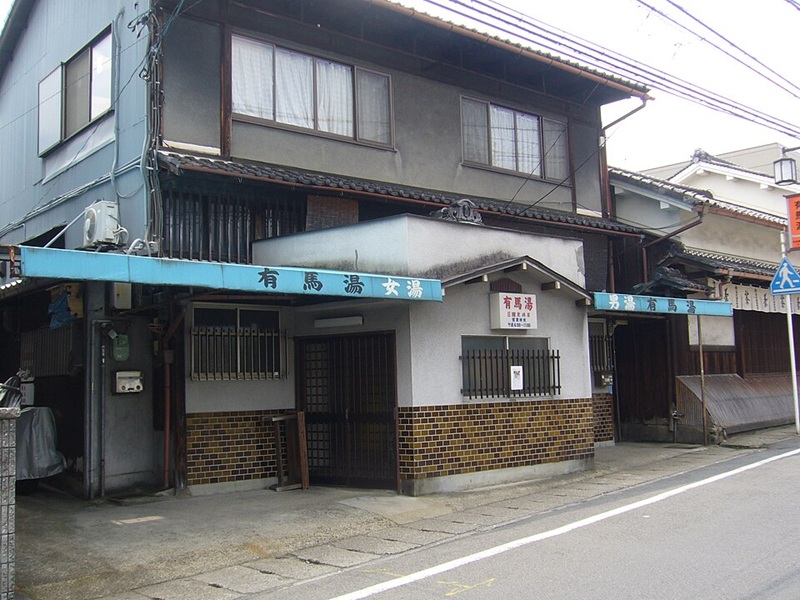Japanese Sentō: A Journey into the Culture of Public Bathing
Sentō (銭湯) are traditional Japanese public baths that represent much more than just a place to wash. They are community, cultural, and historical spaces where physical well-being intertwines with a sense of belonging and sharing. Originally created to make up for the lack of private sanitation facilities in homes, sentō have continued to play an important role in daily Japanese life, evolving over time while remaining true to their essence.
Origins and Social Role
The origin of sentō dates back to the Edo period (1603–1868), when city dwellings in Japan lacked private bathrooms. Sentō thus became a public necessity as well as a meeting point. They were not just places to wash but true community centers where people would gather after work, chat with neighbors, and share moments of tranquility. In an era far from individualism, sentō helped strengthen social bonds.

Takuya Oikawa, CC BY-SA 2.0, via Wikimedia Commons
Structure and Operation
At the entrance of a sentō, there is a noren, a fabric curtain with Japanese symbols marking the entry. Beyond it is the bandai, a raised counter where staff greet customers, manage access, and often chat with regulars. From there, one enters the changing rooms, separated by gender.
Each sentō has an area with seated showers, small stools, and buckets. Here, one washes thoroughly before entering the communal bath. It’s important to respect etiquette: no soap or shampoo in the tubs, no splashing, shouting, or intrusive behavior. Nudity is normal and required; swimsuits are prohibited as they go against the spirit of sharing and equality that defines these places.
The Baths: Relaxation and Ritual
The tubs, often large and deep, contain very hot water (around 40–42 °C / 104–107 °F). Some sentō offer multiple tubs with different temperatures, water enriched with minerals, herbs, or aromas such as yuzu (a fragrant citrus fruit) on special occasions. There may also be tubs with water jets for massage, dry or steam saunas, and sometimes even small outdoor areas (rotenburo).
The bathing experience is not only about hygiene but also a ritual. After washing calmly, one enters the water to relax. The body unwinds, tension melts away, and the silence – broken only by the sound of water – invites meditation.
Art and Atmosphere
Many sentō are decorated with murals or artistic tiles. One of the most common themes is Mount Fuji, an iconic symbol of Japan, often painted on the back wall of the bath. This type of decoration emerged in the 20th century to evoke a sense of vastness and peace, and today it’s considered an integral part of the sentō cultural experience.
Some buildings still preserve the Showa-era architecture, with pagoda-style roofs, high wooden ceilings, and tatami flooring in the relaxation area. Entering one of these baths also means stepping into the past, into a slower, more intimate Japan.
Douglas Perkins, CC BY 4.0, via Wikimedia Commons
Tattoos and Tourism
Traditionally, access to sentō was denied to people with tattoos, as they were associated with the yakuza, Japan’s organized crime. However, with the rise in tourism and the global spread of tattoos, many sentō are beginning to change this rule. Some allow entry for people with small or covered tattoos, while others accept them freely, especially in large cities and modern neighborhoods.
For tourists, the sentō experience may seem intimidating at first, but with a bit of preparation and respect for the rules, it becomes a unique opportunity to experience authentic Japan away from commercial circuits.
Revival and Innovation
In recent years, despite the closure of many traditional sentō due to modernization and declining clientele, there has been a resurgence of interest. Some entrepreneurs and artists have chosen to revive public baths with a contemporary twist: renovated spaces with minimalist design, cultural events, art exhibits, cafes, and bookstores inside.
These neo-sentō blend tradition and innovation, attracting a young and international clientele. They remain places of relaxation, but also become urban cultural centers, symbols of a new sense of community.
An Experience Not to Be Missed
Visiting a sentō is an experience that goes beyond tourism. It’s an opportunity to connect with the deeper layers of Japanese culture – built on respect, silence, harmony, and small daily gestures. Whether it’s a historic bath in a Tokyo neighborhood or a designer sentō in the heart of Kyoto, immersing yourself in these waters means participating, even for an hour, in a millennia-old tradition that continues to endure and evolve.
Douglas Perkins, CC BY 4.0, via Wikimedia Commons


